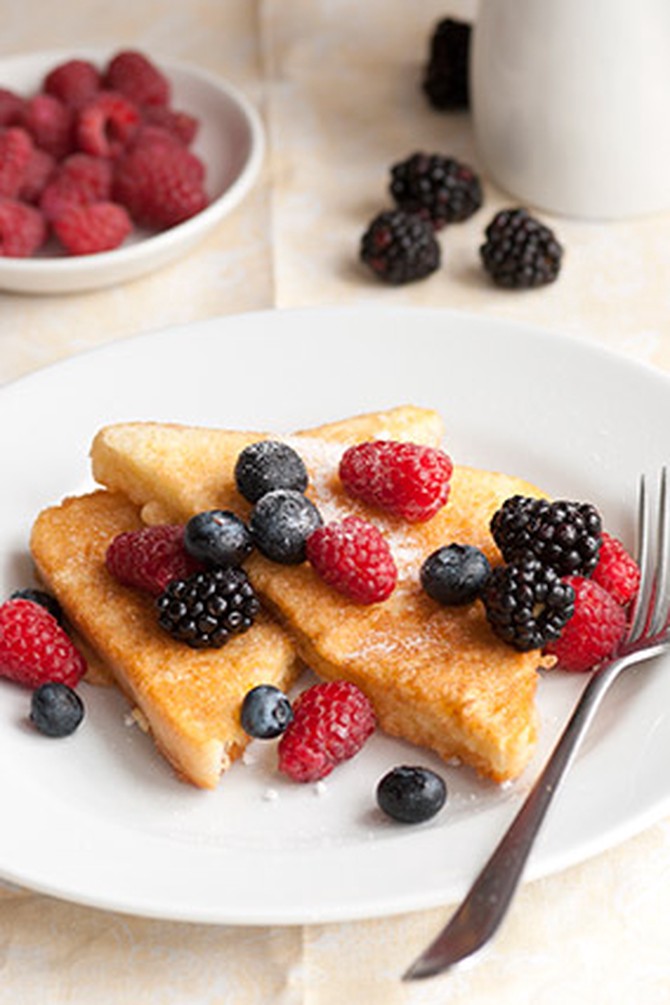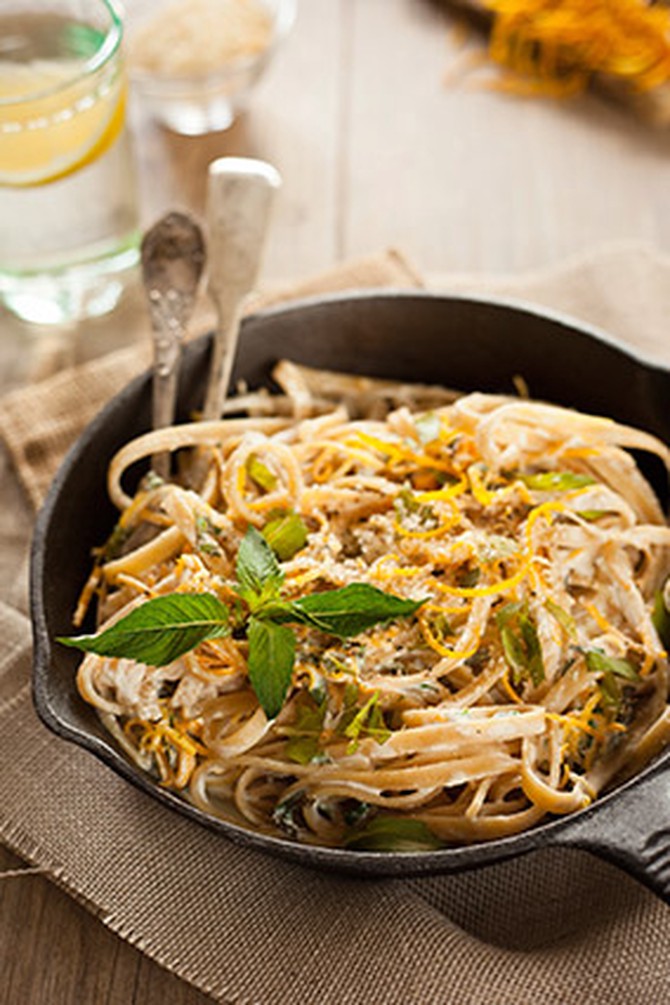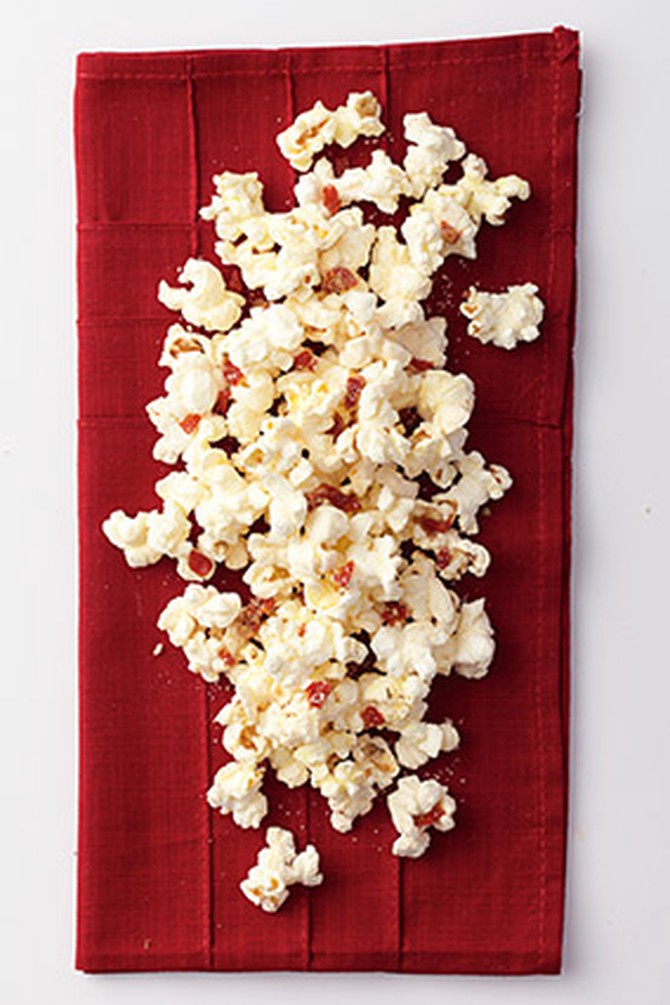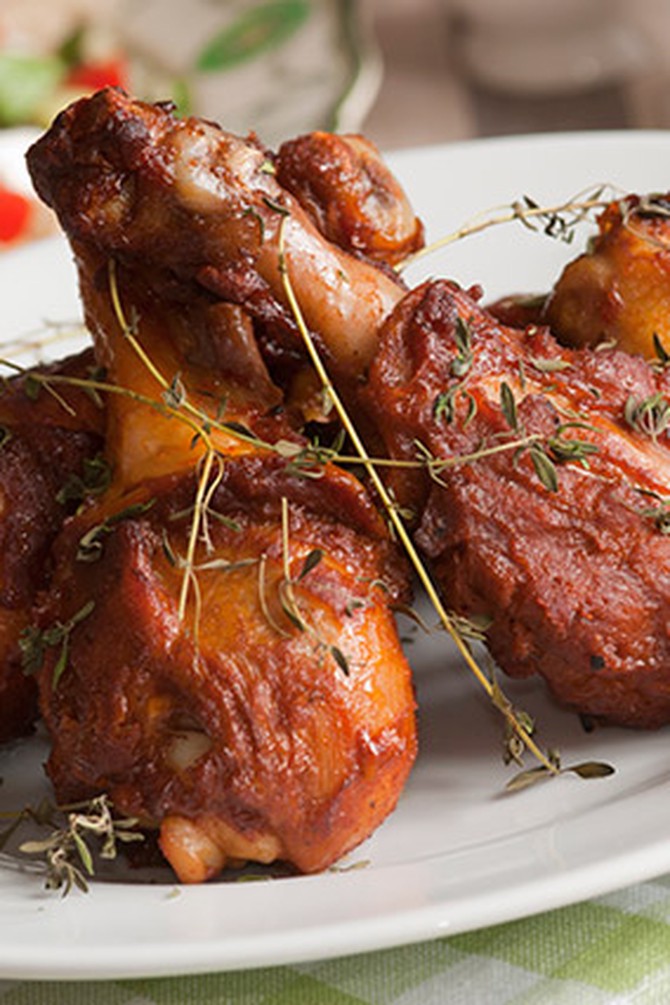5 Basics We're All Cooking Wrong
Learn how to make everyday dishes, from French toast to popcorn, turn out so much better—with just a few tiny tweaks.
By Lynn Andriani

Photo: Thinkstock
French Toast: Go for the Crunch
Sure, you can get crazy with pain perdu, topping it with bourbon maple syrup or cranberries and mascarpone. But if you aren't dipping your bread in a batter that includes flour, you're missing out on what's arguably the best part of this classic breakfast: a crisp crust. Instead of just combining eggs, milk and flavorings like cinnamon and vanilla, whisk in a small amount of flour (two tablespoons should be sufficient if you're using two eggs and a half-cup milk for about six slices of French toast). Dip the bread in this mixture, and you'll get crunchy pieces that are still perfectly eggy and soft inside.

Photo: Thinkstock
Pasta: Finish the Noodles This Way for Maximum Sauce Soakage
Yes, we did just make that word up. But listen: you can boil the spaghetti to ideal al dente doneness; you can make the most delicious sauce with the best tomatoes. However, the most effective way to marry these two parts is not stirring them together in a serving bowl. Rather, drain the pasta about a minute before it's finished cooking (and reserve a cup of the starchy water in case you need it to thin things out later). Add the noodles to the sauté pan where your tomatoes (or olive oil and garlic or sage and butter) are bubbling away. The spaghetti will finish cooking in the pan and—the best part—the heat will help it soak up much more flavor and ensure that each individual piece gets slicked with sauce.

Photo: Con Poulos
Meatballs: Better Breadcrumbs = Better Balls
It doesn't matter if you're making beef, pork, lamb or turkey meatballs, or if you're working with Italian or Middle Eastern flavors—you're probably going to be adding breadcrumbs to the mix at some point. And if you're reaching for a canister of pre-made crumbs, you're preventing your meatballs from being as fluffy and light as possible. We love panko, but it's too pricey to use as a filler. The ideal crumbs are ones you make by tossing a slice of white bread (a little stale is fine but not necessary) into a food processor and blitzing for a few seconds. They'll help bind the rest of the ingredients together and provide just the right amount of airiness.

Photo: Lara Robby/Studio D.
Popcorn: Salt It Early
Hats off to you if you're able to eat popcorn without salt...but for those of us who can't cram handfuls of the airy, crunchy, sodium-sprinkled stuff in our mouths fast enough, there's a crucial moment in the popping process when we should add the seasoning—and it isn't once we're on the couch, bowl in hand. Carol Beckerman, author of Popcorn! 100 Sweet and Savory Recipes, says you should add salt to the pan at the same time you pour the kernels in, so that the tiny grains will be distributed throughout and not just here and there.

Photo: Thinkstock
Grilled Chicken: Put the Sauce on Later
Burning the burgers or undercooking the steaks—these aren't the biggest mistakes competitive barbecue champ and BBQ Pitmasters host Myron Mixon sees cooks make. The biggest is that they don't differentiate between sauces and marinades—and so they slather barbecue sauce on chicken way too early, which winds up burning (barbecue sauces almost always contain sugar, which chars quickly). Unlike a marinade, the sauce is a finisher, says Mixon, whose new book is Everyday Barbecue. He suggests brushing it on in the last 15 minutes of cooking.
Next: 5 cooking myths you should ignore
Next: 5 cooking myths you should ignore
Published 05/17/2013

